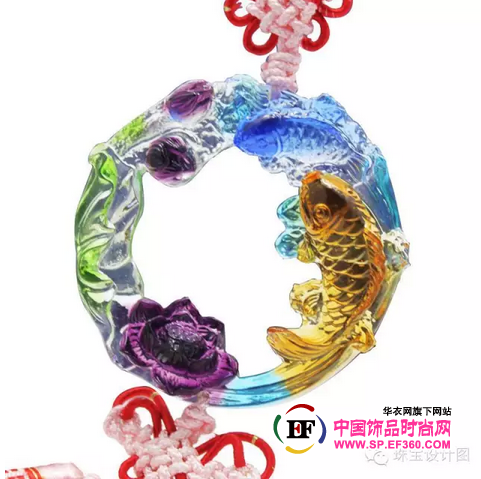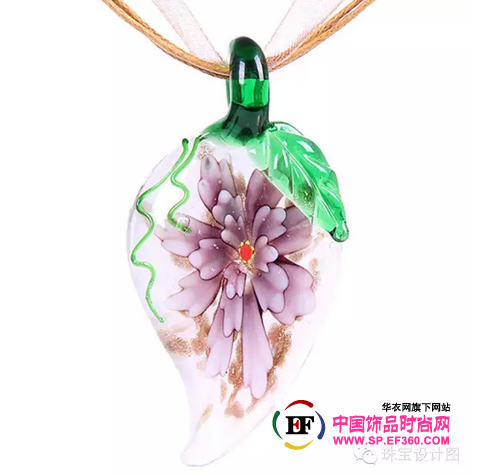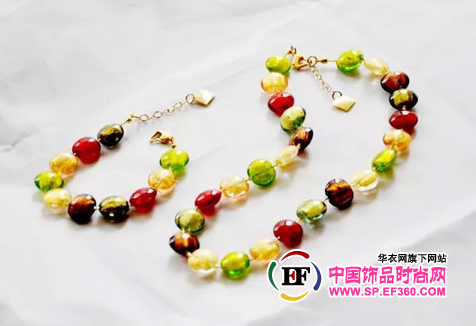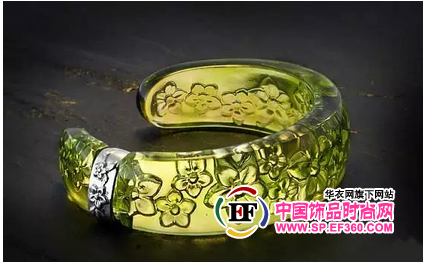Glass is the name of ancient China for glass and belongs to only one type of glass. Its scope is far smaller than that of glass. The works created by today's glass materials are commonly known as glass works of art.
Its color flow is colorful and beautiful; its quality is crystal clear and dazzling. This process needs to be completed by dozens of manual and careful operations, and slight negligence can cause failure or paralysis.
In ancient China, the materials used to make glazed glass were obtained from by-products produced during bronze casting, and then refined and processed into glass. The colors of the glass are varied, and the ancients called it the "five colored stone." In ancient times, it was very difficult for people to get it, so people even considered it as precious even more than jade.
The legend that the earliest cornucopia of the God of Wealth is also made of glass, so the glass is considered to be a Fortune Teller for Fortune and Fortune, which is more direct and effective than the commonly used yellow crystal.
The glazed glass is known as the first of the five most famous devices in China (Gold, Silver, Jade, Glass, Ceramics, and Bronze) and one of the seven treasures of the Buddhist family. It has been basically lost in the Ming Dynasty and is only recorded in legends and genie novels. The sand scorpion was banished from the heavens by breaking a glazed glass.
Glass is more transparent than ordinary plastic, and the color is more natural. Due to the production of the process, bubbles are generally generated. It takes more weight than plastic on your hand. Each surface produces a different color effect in natural light.

Glass features
1, the lengthy production process: from concept, design, sculpture, firing, finishing, polishing to the completion of the work, need to go through 47 elaborate and cumbersome manual processes to complete.
2, hand-made: the workers must master the superb technology to operate, each process has its own uncertain factors, and in the process of repeated experiments, the work of color no similarities, the production of extremely difficult.
3, a model of a product: a mold can only be fired a piece of work, can not be used twice, large complex works and even need to open a mold, firing can be completed. Low success rate makes the work more valuable and precious.
4, high-temperature firing: the selection of raw materials to a high temperature above 1400 °C melted into a variety of colored crystal glass, and after a number of carefully selected cleaning, according to the proportion of work materials placed in the mold, and set a strict rise, Cooling curve, furnace temperature must be controlled within 1000 °C ± 5 °C. The firing process lasts for more than 15 days, so that the crystal raw material is accurate to every detail. Only in this way can we ensure that the work is fine and detailed, three-dimensional, real, streamlined and clear.
5. The color in the glass is formed by high-temperature sintering of various metal oxides, and there will be no aging phenomena such as fading and oxidation.
Ancient glass: The "glazed stone" was added to the "glazed mother" and fired.
Glass stone is a kind of colored crystal material, the main component of which should be silicon dioxide, and the glass mother is an ancient method that is taken from natural and artificially refined, and can change the structure and physical properties of crystal. There are obvious differences in shape, color and transparency.

Taiwanese glass: evolved from Western glass art.
The process originated from the ancient Egyptian "Fays" process. The authoritative monograph of “Contemporary China’s Ancient Liquorâ€, a contemporary state-level authoritative book, records that the proportion of silica in ancient Egypt “Fays†(that is, the ancestor of Western crystal glass) was 92% (not transparent) -99%, The proportion of silica is only slightly greater than 90% (transparent). This 9% difference is the biggest difference between glass and crystal.

Water glass: nowadays common imitation glass.
It is made of unsaturated resin material, which is characterized by its light weight. It has no golden tone of glass, and it changes color and turbid over time. It has no collection value, but its price is extremely low. It is used in dialects in most parts of China. "Smuggled goods" means "counterfeiting" or "imitation," so the true meaning is "false glass."

The hardness of glass is relatively strong, equivalent to the strength of nephrite. But it is also relatively brittle and cannot be beaten or bumped.
Ancient glass identification features:
1, color: crystal and glass have different colors, but all in pure color, after mixing will burst or turbidity. Only ancient glass can be mixed in multiple colors and it is transparent.
2, density: the density of ancient glass is significantly higher than the glass, slightly higher than the crystal, and feel smooth.
3. Voice: Lightly tapping ancient glass will have metal tone.
4. Transparency: Between the glass and the crystal, there are occasional bubbles produced during the firing process.
5, save time: Indefinitely, from the material point of view, ancient glass will never change color, today from the Han Dynasty Liu Sheng tomb unearthed in the ancient glass ear cup is still color as new, is as clear as ever.

Although the glass is a member of luxury in ancient times. But with the passage of time, the untouchable kaolin flowers of the past have long been no longer difficult to find, but people who pursue fashion have already turned their attention to other directions. The glass still has not faded, stands quietly, waiting for the favored person's favor.
Chuck Socks,Print Socks,Hidden Liner Socks
Xingcheng Knitted & Hardware Factory , http://www.sockssupplier.com